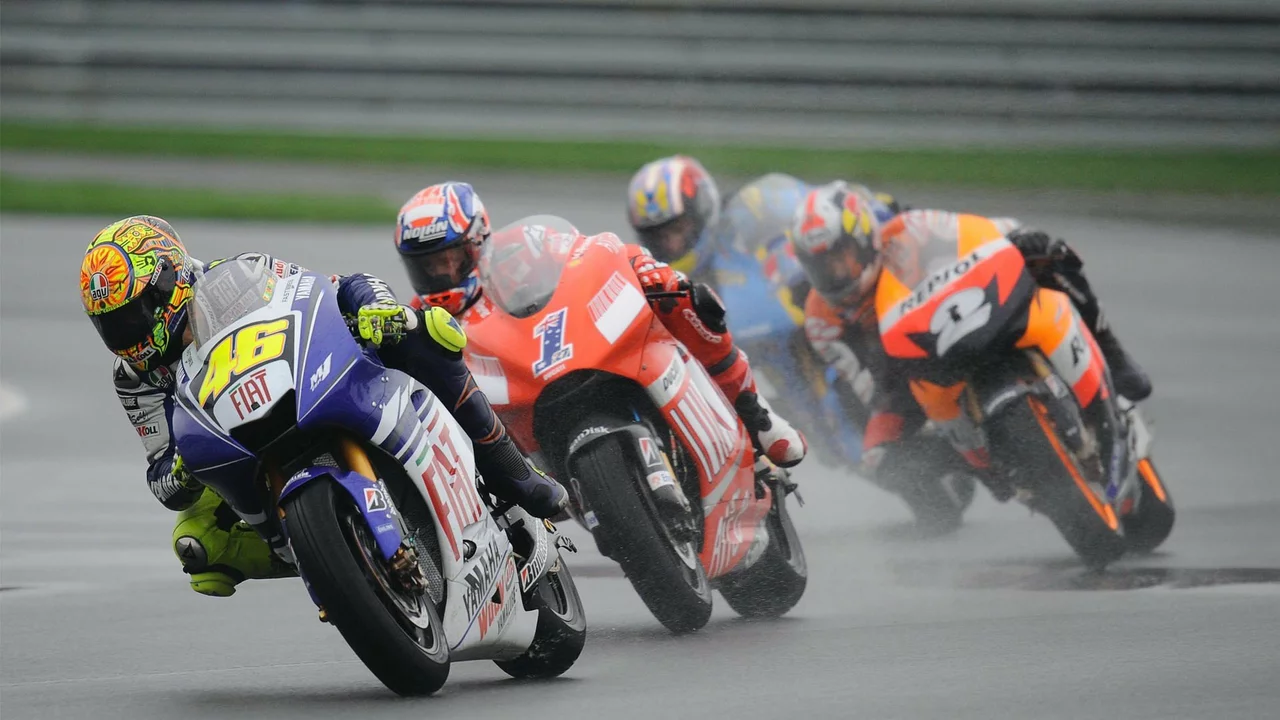The Thrill of Speed: MotoGP's Unbeatable Velocity
When I think about MotoGP, the first thing that comes to my mind is the mind-boggling speed. These motorcycles can reach top speeds of over 220 mph (350 km/h)! This is faster than most cars on the road, and even some planes during takeoff. As a comparison, the average speed of a commercial jet is around 600 mph, but it takes a lot longer to reach that speed.
These powerful machines are a marvel of modern engineering. The engine power, aerodynamics, and rider skills all contribute to this incredible speed. Seeing the riders lean into turns at such high speeds is truly a sight to behold. It's not just about going fast though; it's about controlling that speed, maintaining stability, and outmaneuvering your opponents. This combination of speed and skill is what makes MotoGP so exciting to watch.
Technology at Its Best: MotoGP's Cutting-Edge Innovations
Another fascinating aspect of MotoGP is the high-tech innovation involved. These motorcycles are packed with the latest technology, which is continuously evolving. From traction control systems to advanced telemetry, these bikes are more like high-speed computers on two wheels. Every part of the bike, from the engine to the tires, is designed to push the limits of performance and safety.
Teams invest heavily in research and development to gain a competitive edge. Innovative materials like carbon fiber are used to reduce weight and increase strength. Sophisticated electronics help riders control their bikes in challenging conditions. It's a testament to how far technology has come, and MotoGP is at the forefront of these advancements.
Pushing the Limits: The Physical and Mental Challenge
It's easy to focus on the bikes and forget about the riders, but they are just as integral to the sport. MotoGP riders are some of the fittest athletes in the world. The physical demands of controlling a bike at high speeds are immense. Riders need strength, stamina, and razor-sharp reflexes. They also need to withstand the heat, as races often take place in sweltering conditions.
But it's not just a physical challenge. MotoGP is a mental game as well. Riders need to make split-second decisions, often while traveling at over 200 mph. They need to read the track, anticipate their opponents' moves, and manage their bikes. It's a high-pressure environment where any mistake could be costly. The mental toughness required is just as impressive as the physical skill.
The Global Phenomenon: MotoGP's Worldwide Appeal
MotoGP is a truly global sport. It attracts millions of fans from all over the world. The championship is held in different countries, showcasing a variety of tracks and conditions. This global appeal is part of what makes MotoGP so special. Fans can watch their favorite riders compete in their home country, and also see how they fare on the international stage.
The diversity of the riders is another draw. MotoGP riders come from a wide range of backgrounds and countries. This diversity adds an extra layer of intrigue to the championship. Fans can root for their countrymen, or they can support riders based on their skills and personalities. It's a global community bound by a shared love of speed and competition.
Total Commitment: The Danger and Dedication in MotoGP
The last aspect I want to talk about is the danger and dedication involved in MotoGP. It's a thrilling sport, but it's also a dangerous one. Crashes are common, and sometimes they can be serious. Riders put their lives on the line every time they get on their bikes. This level of risk requires a total commitment to the sport.
But despite the danger, these riders are dedicated to their craft. They train hard, risk it all on the track, and push themselves to their limits. They do it for the love of the sport, the thrill of competition, and the adoration of their fans. This dedication is what makes MotoGP so compelling to watch. It's a sport where the stakes are high, and the rewards are even higher.
